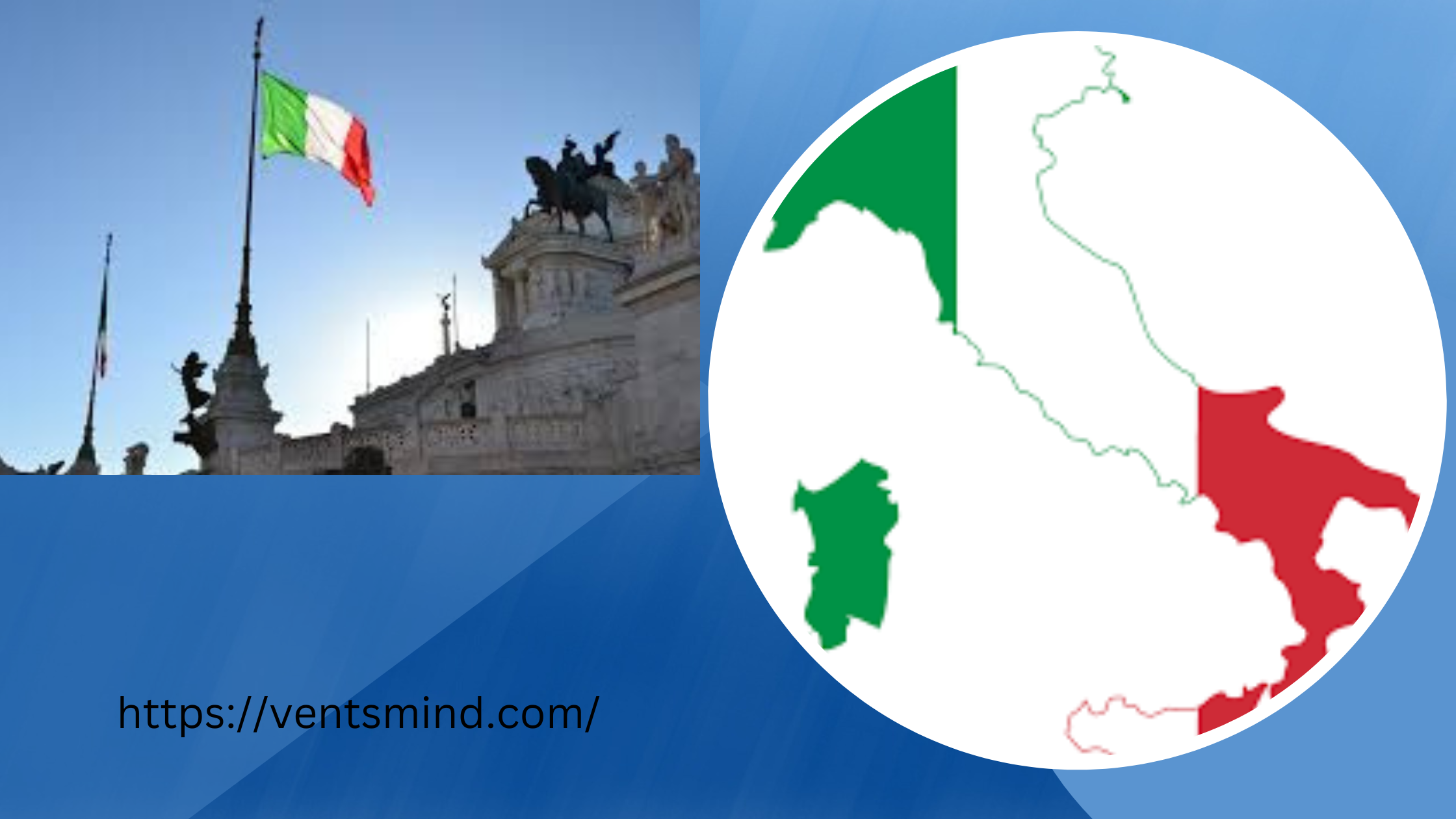
The Role of the Flag in Italy best information 2024 : Symbolism, History, and National Identity
Flag in italy are powerful symbols, representing not just a country but its values, history, and identity. In Italy, the national flag, known as the “Tricolore,” has played a significant role in shaping the nation’s political, cultural, and historical landscape. From its inception during revolutionary movements to its current status as a symbol of unity and pride, the flag in italy reflects the journey of the Italian people toward nationhood and modernity.
This article explores the origins, evolution, and significance of the flag in italy, highlighting its influence on national identity and its place in contemporary Italy. We will also look at how the flag is used in various contexts and the legal and cultural protocols surrounding its display.
The Origins of the flag in italy
The modern flag in italy features three vertical stripes of equal size in green, white, and red. While the design seems simple, its historical significance is profound. The colors and the flag itself have roots in Italy’s struggle for independence, unification, and republicanism.
The Tricolore’s origins trace back to the late 18th century, during the revolutionary movements that swept through Europe in the wake of the French Revolution. Italy, then a fragmented collection of states and territories under various rulers, was influenced by the ideals of liberty, equality, and fraternity. The design of the Tricolore was inspired by the French tricolour, but its specific color choices—green, white, and red—have their own meanings that are unique to Italy.
The first official use of a tricolor flag in Italy occurred in 1797 when the Cispadane Republic, a French client state in northern Italy, adopted a red, white, and green banner as its national flag. The design evolved over time, but the three-color scheme remained consistent. These colors were associated with various republican movements and symbolized Italy’s desire for independence from foreign rule.
Green was said to represent the lush plains and countryside of northern Italy, white symbolized the snowy peaks of the Alps, and red represented the blood spilled in Italy’s fight for freedom. This early flag in italy was closely tied to the revolutionary fervor of the time and became a symbol of the Italian people’s aspirations for self-determination.
The Risorgimento and the Tricolore
The 19th century was a tumultuous period for Italy, marked by the Risorgimento, the movement for Italian unification. During this time, the Tricolore evolved into more than just a revolutionary symbol; it became a representation of the idea of a unified Italy. Figures such as Giuseppe Mazzini, Giuseppe Garibaldi, and Count Camillo di Cavour, along with King Victor Emmanuel II of Sardinia, led the charge for unification, using the flag in italy as a rallying point.
In 1848, the Kingdom of Sardinia officially adopted the Tricolore with the addition of the Savoy coat of arms to the center. This marked an important moment in the flag’s history, as it became associated with the monarchy and the growing national identity of Italy. When the Kingdom of Italy was proclaimed in 1861, following the successful wars of independence and the consolidation of various flag in italy states under one banner, the Tricolore was declared the official flag of the newly unified country.
For Italians, the flag in italy symbolized not just political unity but also cultural and historical ties that transcended regional differences. It represented a shared dream of freedom from foreign dominance, self-governance, and national pride. The flag became a focal point during key historical moments, including the annexation of Rome in 1870, which completed the process of unification and made the city the capital of Italy.
The Flag During Fascism and the Republic
The Italian flag’s journey took another turn in the early 20th century with the rise of Benito Mussolini’s fascist regime. Although the Tricolore remained the national flag, its meaning was co-opted by fascist propaganda. Mussolini’s regime placed heavy emphasis on nationalism and sought to reframe the flag as a symbol of fascist ideology. The fascist government also used its own emblems, like the fasces (a bundle of rods symbolizing state power), alongside the national flag.
Following World War II and the fall of Mussolini, Italy underwent significant political changes. In 1946, after a national referendum, Italy became a republic, abolishing the monarchy. The Savoy coat of arms was removed from the flag, and the plain Tricolore once again became the symbol of the Italian state. On January 1, 1948, the Italian Constitution officially recognized the Tricolore as the national flag of the Republic of Italy.
This marked a significant moment in Italy’s post-war recovery. The flag, now free from the associations of monarchy and fascism, became a symbol of democratic values, freedom, and the resilience of the Italian people. Since then, it has remained unchanged, a testament to Italy’s enduring commitment to democracy and unity.
Symbolism of the flag in italy
The colors of the flag in italy hold deep symbolic meaning, with interpretations that have evolved over time. While the original associations with the natural landscape and the struggles for independence are still widely recognized, there are additional layers of meaning tied to Italian culture, religion, and national pride.
- Green: The color green, traditionally associated with Italy’s lush landscapes, has also been interpreted as a symbol of hope. It represents the country’s agricultural richness, as well as its historical ties to the land and the importance of nature in Italian life.
- White: White is often seen as a symbol of peace and purity. It also represents the snow-covered Alps, which have served as both a natural boundary and a source of protection for Italy throughout history. The color white can also be linked to the Catholic faith, which has played a central role in Italian culture and identity for centuries.
- Red: Red is a color that carries multiple layers of significance. Historically, it represents the bloodshed in the struggle for Italy’s independence and unification. It is also a symbol of bravery, strength, and sacrifice. In a religious context, red is associated with the Catholic Church and the martyrdom of saints, reflecting Italy’s deep Christian roots.
The flag, in its entirety, serves as a unifying symbol that transcends regional differences. Despite Italy’s diverse cultural landscape, with its distinct regional dialects, cuisines, and traditions, the flag represents the collective identity of the Italian people as a nation.
The Italian Flag in Modern Times
Today, the Italian flag continues to be a powerful symbol of national pride and unity. It is prominently displayed during national holidays such as Republic Day (Festa della Repubblica) on June 2, which celebrates the establishment of the Italian Republic in 1946. On this day, military parades and other celebrations are held, with the Tricolore taking center stage.
The flag is also a common sight at international events, especially during sporting competitions like the Olympics or the FIFA World Cup. Italians, known for their passionate support of their national teams, proudly wave the flag in stadiums and public squares, demonstrating the strong emotional connection they feel toward their national symbol.
Additionally, the flag in italy is frequently displayed at government buildings, schools, and other public institutions. It is protected by law, and there are specific regulations governing its display. For example, when flown alongside other national flags, the Italian flag must always be placed in a position of honor. Disrespecting or desecrating the flag is considered a serious offense and is punishable by law.
In the political sphere, the flag serves as a reminder of Italy’s hard-fought democracy and republican values. It is often invoked by politicians across the political spectrum as a symbol of unity in the face of challenges. In recent years, during times of crisis, such as the COVID-19 pandemic, the flag has been used to foster a sense of solidarity and resilience among the Italian people.
Conclusion
The flag in italy, the Tricolore, is more than just a piece of fabric; it is a potent symbol of the nation’s history, identity, and values. From its revolutionary origins to its central role in the unification of Italy, the flag has evolved alongside the country itself. It has witnessed Italy’s struggles for independence, the rise and fall of fascism, and the establishment of the Italian Republic.
Today, the flag in italy stands as a symbol of unity, democracy, and national pride. It represents the diverse regions and cultures that make up Italy, while also serving as a reminder of the shared values and aspirations that bind the Italian people together. Whether flown at international sporting events or displayed on national holidays, the Italian flag remains a source of inspiration and pride for millions of Italians, both at home and abroad.


